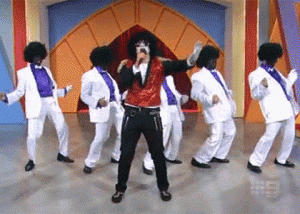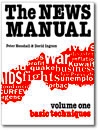DogBitesMan » Featured, Journalism » When humour is no laughing matter
When humour is no laughing matter
The so-called Muhammad cartoon controversy in Denmark led to killings, death threats and worldwide protests in what Danish Prime Minister Anders Fogh Rasmussen said at the time was his country’s worst international crisis since World War II.
In June 2009, a sketch on the Australian Broadcasting Corporation’s The Chaser comedy program about dying children making wishes caused national outrage and led to the suspension of the weekly series and the sacking of the ABC’s head of comedy.
 Most recently, an Australian commercial TV talent show Hey Hey It’s Saturday broadcast a song-and-dance act in which men blacked their faces to represent the Jackson Five, a routine which forced an immediate apology to the shocked American singer Harry Connick Jr who was on the judging panel and led to headlines around the world portraying Australia as racist, backward and out-of-touch from attitudes in the 21st Century.
Most recently, an Australian commercial TV talent show Hey Hey It’s Saturday broadcast a song-and-dance act in which men blacked their faces to represent the Jackson Five, a routine which forced an immediate apology to the shocked American singer Harry Connick Jr who was on the judging panel and led to headlines around the world portraying Australia as racist, backward and out-of-touch from attitudes in the 21st Century.
Australians themselves were divided by the issue. Some thought the routine had been outrageous, an insult to black people and portraying an outdated image of Australia. Others could not see what all the fuss was about. Some said it made them laugh, others thought it embarrassingly unfunny.
Perhaps as well as any issue in recent times, the controversy demonstrated how subjective humour is and how dangerous it can be once unleashed through the media.
It showed that what one person laughs at may leave another person cold; what that person finds hilarious may be very offensive to someone else.
It is hard enough to get it right when communicating one-to-one, when the person telling a joke can get immediate, ongoing feedback from the person listening. It is more difficult for a comedian in a comedy club, who has to monitor the responses of dozens of people in the audience. It is a minefield for the mass media, where the person telling the joke or drawing a cartoon cannot even tell who is receiving it, let alone whether they are finding it amusing. It is a wonder the media do it at all.
But human beings enjoy humour. Many psychiatrists believe it is essential for good mental health.
Humour joins people together, spreading good feelings. It can relieve tension, help to overcome awkward moments or take the anger out of an encounter.
The Czech-born writer Milan Kundera said: “The sound of laughter is like the vaulted dome of a temple of happiness.”
Humour in the form of satire or parody can also have a harder edge, forcing us to look at situations in a different light or from a different perspective, making us rethink our views in a way that straightforward criticism often cannot. Historically and around the world, humour has been used to criticise authoritarian governments when more straightforward methods are not allowed.
The great American lawyer and civil libertarian Clarence Darrow once warned: “If you lose the power to laugh, you lose the power to think.”
Of the three examples quoted above, only the middle case – in Australia it was called the Make-a-Wish controversy – was actually a genuine attempt at satire. The Chaser program makers were trying to make a point about exploiting sick children.
In the case of the so-called Muhammad cartoons, while some of them might have been satirical and even funny, the Danish paper Jyllands-Posten published them together mainly to make a stand against self-censorship on Muslim issues. It deliberately set out to provoke reaction and reaped the results.
The “Jackson Jive” dance routine on Australian commercial TV was probably no more than a shallow and ill-considered attempt to make the viewers of a particular TV show laugh. Even the performers and the TV company were apparently unclear whether it was mocking the recently-dead Michael Jackson or was a tribute to him, bizarre though the latter argument might be in the circumstances.
Apart from the damage it did to Australia’s reputation abroad, it probably was the “storm in a teacup” many observers claimed.
However, the dance routine itself and the reactions it provoked illustrated quite well why the media should think hard before printing, broadcasting or webcasting humour.
Not only should the professional media think hard about everything they put out – if only to protect often hard-won reputations – but because humour is so subjective and culturally specific
Often the victims of humour already suffer disadvantage and oppression. Black Americans have such a long and terrible history of oppression by white people that blackface comedy only dredges up those cultural memories, revives them yet again and adds new injury to old wounds. And this happens whatever the motive of the perpetrator, whether a premeditated attempt to hurt or simply a lack of judgment. Connick made the point that although he did not think the men in the blackface routine wanted to offend, their actions were offensive to large numbers of people.
And it is simply not enough for people in the dominant group to say they do not find the humour offensive. Why would they? They aren’t the ones who suffer. As journalists and media people we have a public responsibility to consider all the possible effects of what we write or broadcast.
That doesn’t mean people in the media must censor themselves. If there is a glaring injustice which could be highlighted by humour, then publish it even though someone might be offended. If someone’s behaviour is so ridiculous, so beyond the norms of any society that it invites parody, then go ahead and mock it.
But any decision should follow thought and consideration. It is not a difficult or onerous task. If there is a risk of innocent people being harmed, just ask yourself two questions.
First, is the humour – joke, cartoon, parody performance – appropriate to the subject matter, i.e. does it tell a “truth”, expose hypocrisy or some other wrong? Second, is it defensible because of that, i.e. is any harm it does to innocent people justified by the importance of that truth or any overriding social benefit?
If the answer is “No” to these questions, either the idea should be dropped or a better way found of achieving the same outcome without the harm to innocent bystanders.
If the answers are “Yes”, then in the words of the Duke of Wellington: “Publish and be damned!”
This was first published in The News Manual in October 2009
____________________
____________________
If you are seeking guidance on what journalists should consider when dealing with humour, go to Chapter 61: Taste and Bad Taste in The News Manual
Filed under: Featured, Journalism · Tags: ABC, Anders Fogh Rasmussen, Australian Broadcasting Corporation, blackface, cartoon, Clarence Darrow, Denmark, Duke of Wellington, Harru Connick Jnr, Hey Hey It's Saturday, humour, Islam, Jackson Five, Jackson Jive, joke, Jyllands-Posten, Make-a-Wish, Milan Kundera, Muhammad cartoon, Muslims, parody, publish and be damned, racism, satire, The Chase













